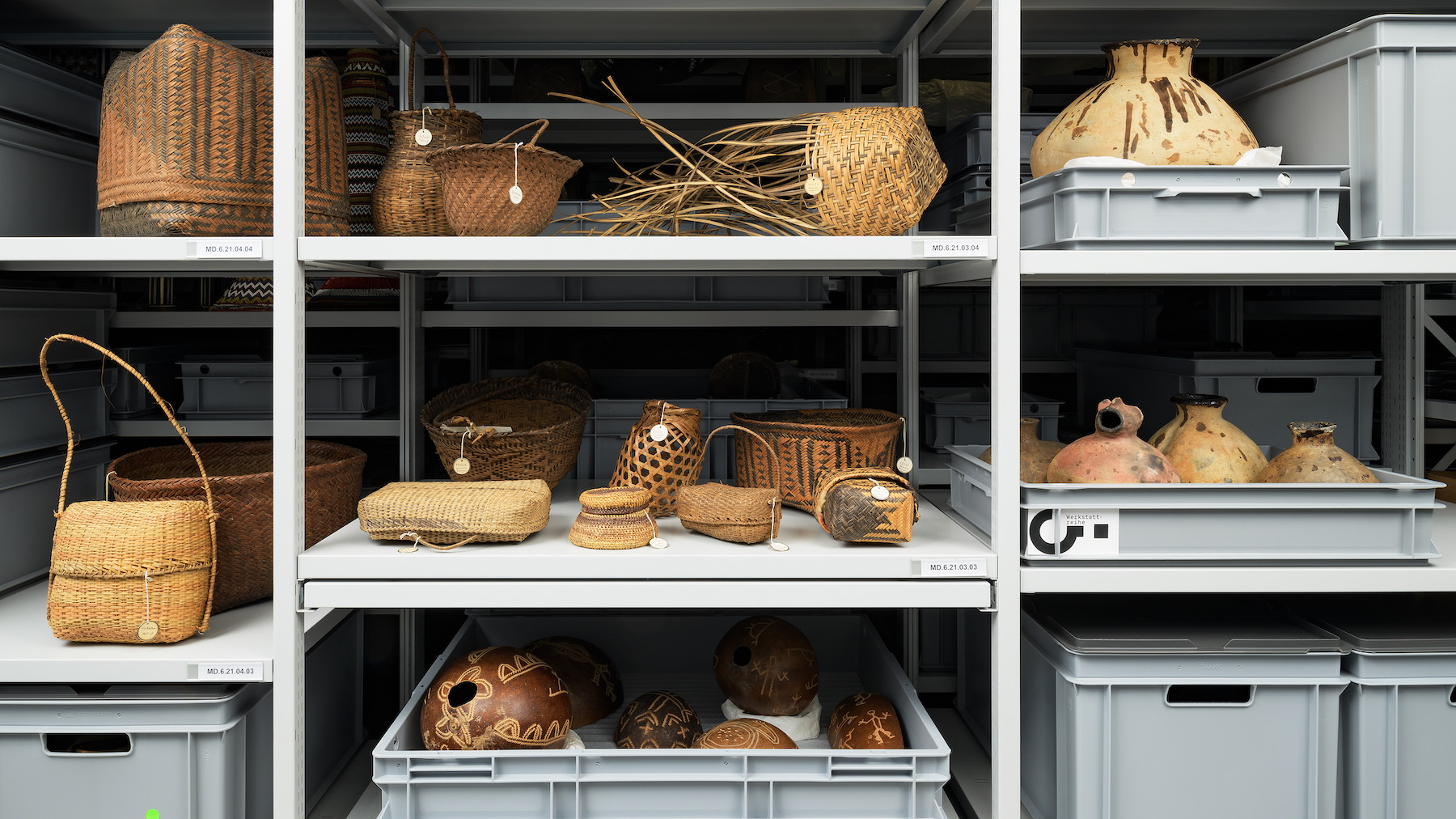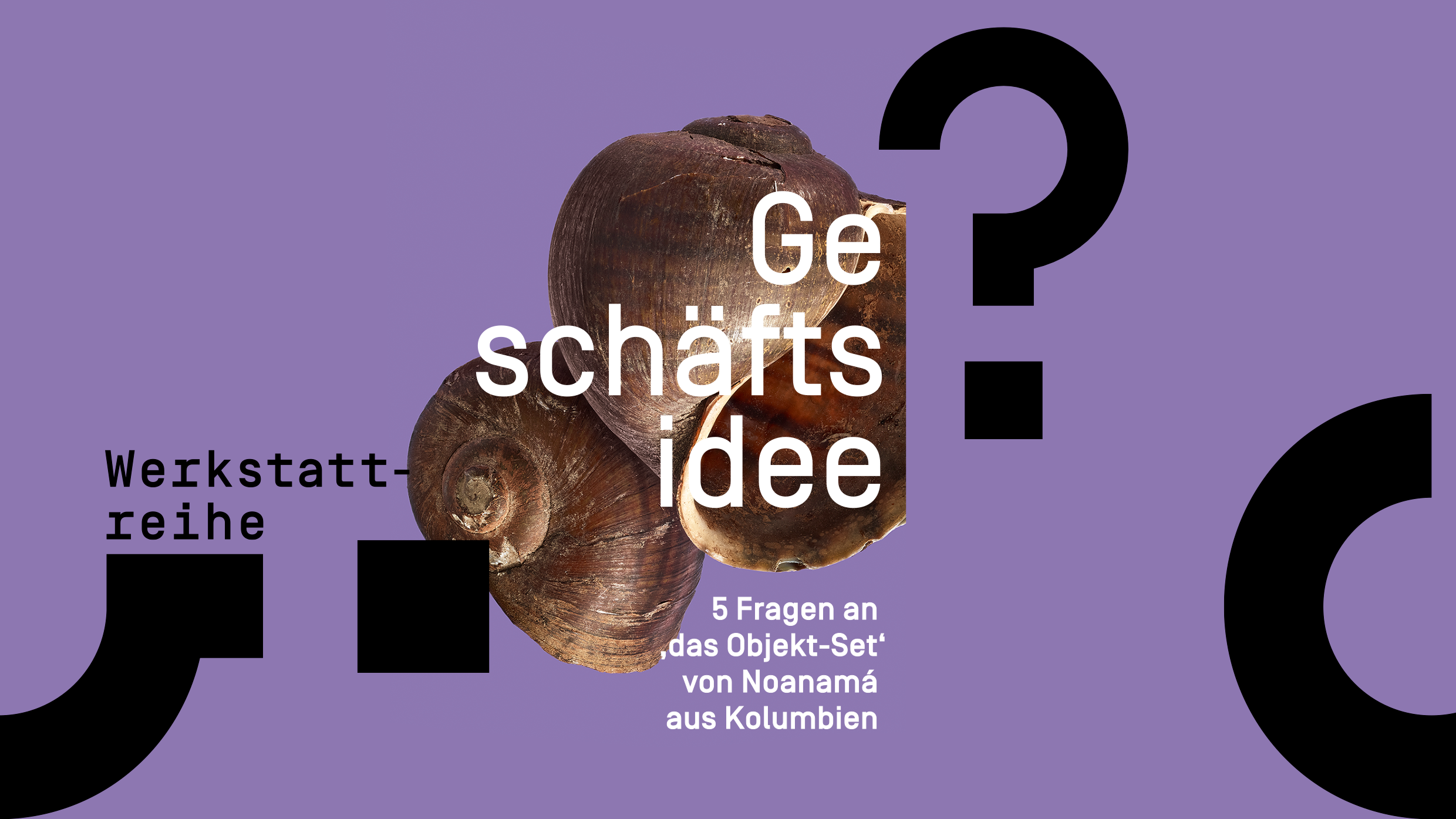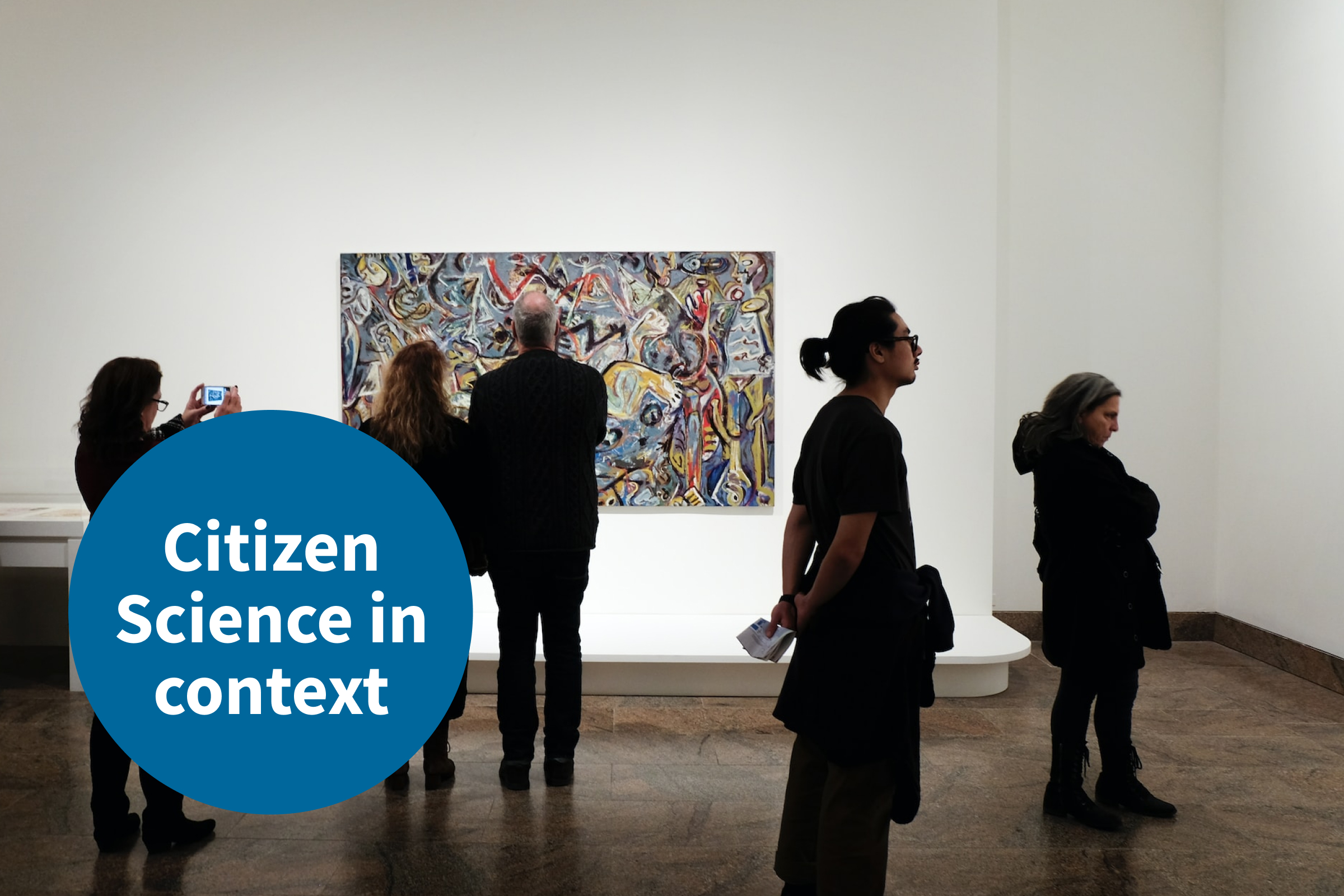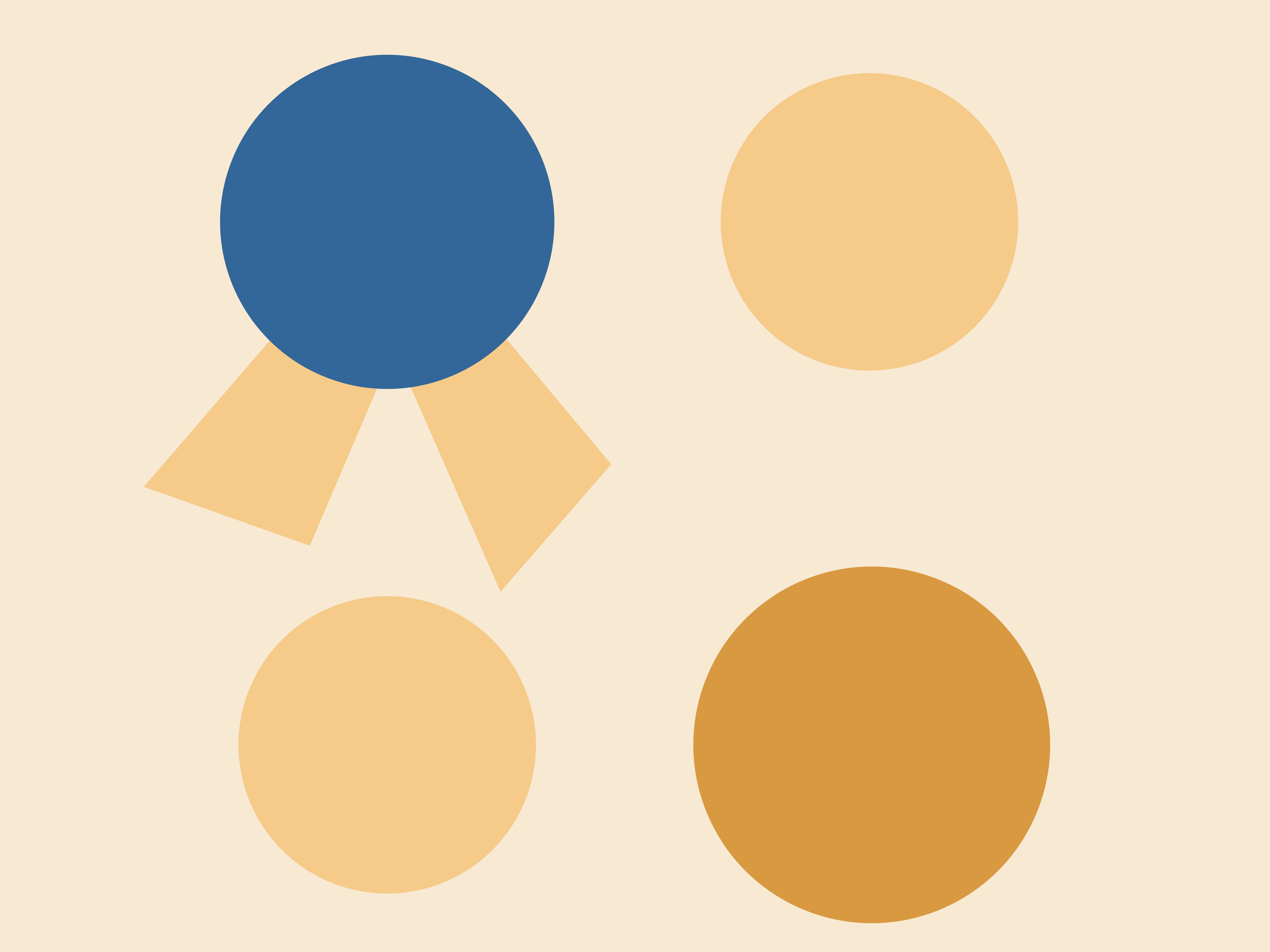A museum transforms into a knowledge workshop
Ethnological museums have been undergoing radical change for many years. They are critically examining the history of their own collections and dealing with the colonial past as well as the copyrights of their collection objects. So does also the Ethnographic Museum at the University of Zurich. However, it is going one step further: with the exhibition series "Five questions to the collections", the museum is transforming itself from a place of representation into an open knowledge workshop. It offers a space in which knowledge can be jointly developed and shared. One of the five workshop projects is the research project "The 'Borys Malkin Collection' in the view of Wounaan in Colombia". The project was funded by one of our Seed Grants. We spoke to the project manager Maike Powroznik from the Ethnographic Museum about it and asked what role Citizen Science plays in it.
Author: Ursina Roffler
The interview was conducted in writing and in German.
Ursina Roffler: Ms Powroznik, the participatory exhibition, which resulted from the Seed Grant project "The 'Borys Malkin Collection' in the view of Wounaan in Colombia", can be seen at the Ethnographic Museum until April 2024. Can you briefly summarize what the project is about?
Maike Powroznik: This exhibition is one of five in the Ethnographic Museum's innovative workshop format: it does not tell ready-made stories about the collections on display, but poses open questions that invite everyone to contribute their thoughts on ethnographic collections, on relationships to creators and on museum practice, or even concrete knowledge about specific objects, collections or contexts.
As an ethnological museum, it is particularly important to us to share the cultural heritage preserved here from all over the world with the communities of origin and to research it together. In the case of the 'Borys Malkin Collection', we have set up this joint research as a Seed Grant project for the first time in order to be able to link the collection back to the descendants of the originators in a very practical way. These are the indigenous Wounaan and, as it turned out shortly after the opening of the workshop, Afro-Colombians, the most important neighbors of Wounaan. In concrete terms, reconnecting means declaring the collection to the communities of origin and exploring it together with local representatives - there and here.
We ask ourselves: What is the history and historical context of this collection, what world knowledge is preserved in and with the collection, what does it mean for today's contemporaries and how do they want us to continue to deal with the collection?
What is the connection to Citizen Science in the project? And what added value do you think Citizen Science has brought to the project, but also to the Ethnographic Museum itself?
Collaboration with the creators of the collections in our museum is one of the most important aspects of ethnological museum work today. On the one hand, the post-migrant society in Switzerland, in Zurich itself, has a direct interest in the collections, and on the other hand, those creators or their descendants who live very far away. Collaboration with partners in the distant communities of authors, who in most cases, know nothing about the whereabouts of their cultural heritage, is ambitious in many respects. For practical reasons, it is often only possible to a limited extent. One decisive criterion is financial viability. Meanwhile, the interest of creators in their material cultural heritage is very high. How can we succeed in sharing the cultural heritage preserved in ethnological museums from all over the world?
The connection to Citizen Science is twofold here: Firstly, the funding of the project by Citizen Science makes this joint research project possible at all; and secondly, it is a special example of the inclusion of citizens from another country from fundamentally different educational contexts. Their approaches to knowledge may not be compatible with Western academic questions and methods - and vice versa! The approval of this Citizen Science project values the local, cultural, technological and historical expertise of the Colombian citizens involved and recognizes their world of knowledge as equal. This is a particularly important contribution to the decolonization of perspectives on the world and on knowledge in a Swiss university context.
Which stakeholders are involved in your project and how are citizen scientists integrated into the project?
At the beginning of the workshop exhibition in October 2022, I got to know the author, journalist and activist Velia Vidal from Quibdó (Dept. Chocó in western Colombia), partly through her project collaboration with the British Museum. In March 2023, she organized a workshop in Quibdó as part of a large festival of her social organization MOTETE, where I met various interested interlocutors. I was asked to present the 'Borys Malkin Collection' with all openness: 138 objects collected in 1968/69, plus 172 historical photographs and reference information on the collector and the context of acquisition - Malkin lived from buying and selling collections, that was his business idea - as well as on museum practice around 1970. Four Wounaan women, an Afro-Colombian woman, two Afro-Colombian museum directors and the director of the "Museo Afro" project of the National Museum in Bogotá took part in the workshop.
At this first meeting, various concerns about the collection and how to deal with it in the future emerged. The two main interlocutors, Wounaan Cruz Quilina Piraza Chamapuro and Afro-Colombian Gloria Amparo Murillo Moreno, then took the time to discuss their concerns in their communities in Río San Juan (Dept. Chocó) and plan further steps. Over the summer, they had passports issued and finally came to Zurich in October 2023 to inspect the collection in person. The display cases were opened and the two women spent two days discussing each individual object. They then rearranged the display cases based on their knowledge and the significance of the objects.
At her request, their discussion of the collection was filmed and audio-recorded for them. It was also their express wish that their knowledge of the objects be conveyed in the exhibition space. "We are here and we want to be noticed," they told me firmly. With a 360° documentation, we can share the exhibition transparently with the project partners and their communities in Colombia.
What worked well and what worked less well?
In this particular case, openness was the most important factor. As I said, the workshop series is designed for open questions, and this is how the Seed Grant project was designed. The challenge was to reach an understanding and to find out and understand what the right questions are for this collection. Through this approach - with the objects themselves as the occasion and subject for our dialog - we were able to explore the relationships that the Wounaan business partners and the collector created in the late 1960s and which have brought us together again today.
In many respects, it is difficult to overcome the great geographical distance. In addition, there is a history of colonial interdependence and completely different worlds of life and knowledge. Despite these circumstances, our encounter was characterized by mutual open-mindedness from the very beginning and therefore we were able to establish a good understandingthat continues to develop today on a basis of trust that we have built up over time.
One challenge in Citizen Science projects is often the time factor. Expectations have to be clarified, roles assigned, methods tested and citizen scientists involved. Is there anything for which you needed more time than originally planned?
In the case of the geographical distance to the citizen scientists in this project and the aforementioned conditions of our encounter, time played an even greater role, which is why the duration of the project was thankfully extended by a further year with the agreement of Citizen Science Zurich.
Were there any other challenges to overcome?
Cruz Piraza and Gloria Murillo live in a very dangerous area on the Río San Juan, which is now dominated by drug cartels. As a foreigner, it was not possible for me to visit them in their communities of Chagpién and Negría. However, they themselves took the risk of traveling to Quibdó for the workshop. In the Río San Juan, they are exposed to arbitrary rule, neglect by government institutions and forced resettlement measures. This project and the collection therefore played an important role for them in their peaceful, determined resistance against these conditions and in their courageous fight for a self-determined, peaceful life as material reassurance for their social and living conditions, which have been under pressure for decades.
Was there anything during the project that surprised you in a positive way? Something you hadn't expected?
The moment when the two women Cruz Piraza and Gloria Murillo shared their knowledge with me in Zurich and ultimately also in the exhibition itself was a very pleasant surprise. Despite all the justified criticism and reservations, they expressed relief that this collection has stood the test of time, that it is currently in safer hands here than on the Río San Juan and that it is now accessible to them (also through the virtual documentation). In our open dialog, we discussed the past together and opened a whole new chapter today - we with each other and they for themselves.
Looking back, is there anything you would do differently?
In order for collaboration to work well with quite unpredictable developments - especially if the knowledge worlds of all those involved are far apart - sufficient time for discussions must be planned in any case. Particularly in a cultural and social science subject such as anthropology, building mutual trust and getting to know each other is essential for all sides. Our personal contacts in Quibdó and Zurich were limited to a few days in each case. Despite all the digital communication options, I would definitely plan more time for this, which was ultimately a particular pleasure for everyone.
What advice would you give to people planning a Citizen Science project?
The global academic perspective is just one of many, many perspectives. Involving citizen scientists in research projects can not only be enriching. I think that they are sometimes the real experts without whom certain questions cannot be answered.
There will be more activities this year (2024). What else is planned and what happens after that?
The discussion of the objects on site in Zurich is to become the basis for a textbook for schoolchildren in Chocó, which is currently in the making. In their encounter with the collection, the Afro and indigenous creators (already at the workshop in Quibdó) realized for themselves that they have a common story to tell about this collection - which of course also concerns Switzerland - and that they want to tell this story. This encounter also brings them closer together as neighbors in Chocó.
In addition, both children and adults will learn how to make the objects themselves in workshops that are also part of the project. All the objects in the collection, which itself comprises many different object categories and was even advertised to the museum by Malkin as a 'complete set', are to be reproduced and made available in a separate museum.
What do you personally take away from the project?
Academic third-party funded projects should be planned and formulated in advance in terms of method, content and time. Of course, this makes sense and is based on a long tradition and experience. This also applies to research at the Ethnographic Museum. However, the workshop series turns the academic method on its head and we realize that many questions relevant to the research partners in the regions of origin would not have occurred to us in advance. For me, this is the most important result of the joint research with citizen scientists from Colombia so far: the academic world should be even more open to other world views and rethink approaches and methods so that more diverse insights can be gained for everyone.
Thank you very much for the interview.
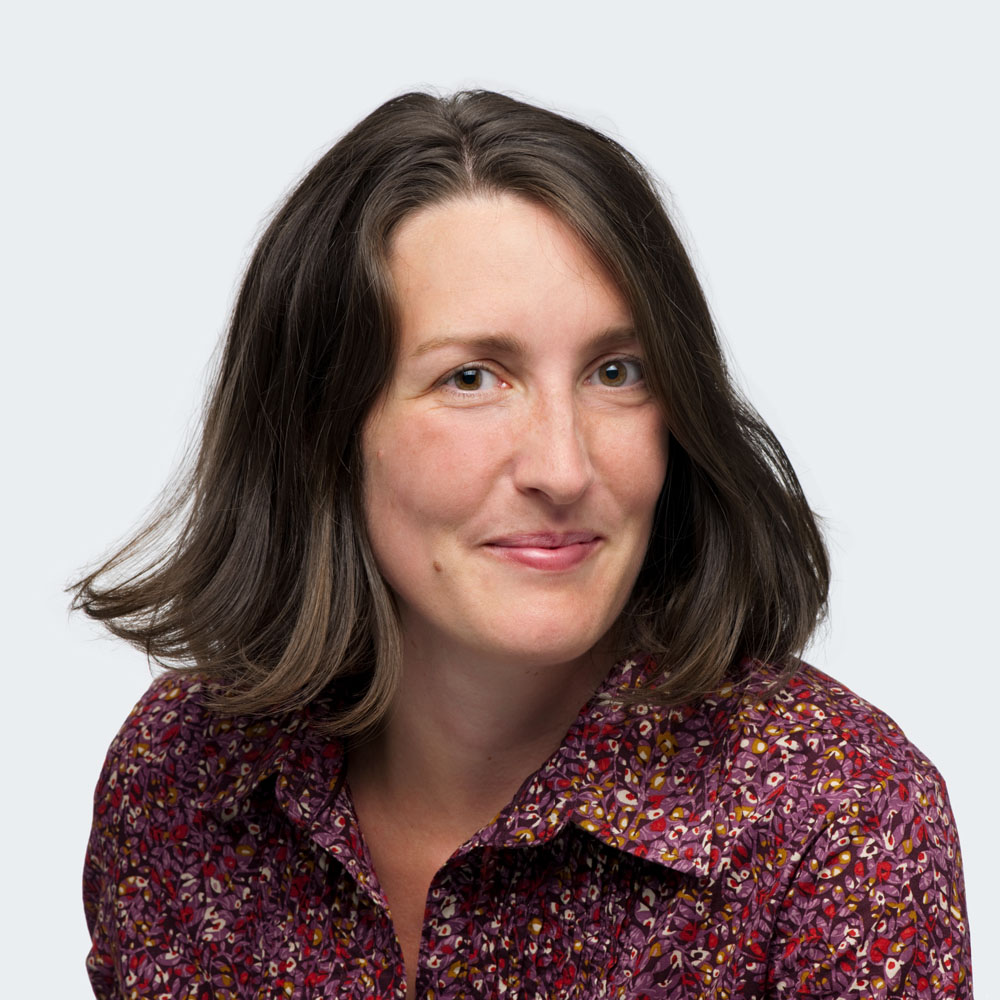
About: Maike Powroznik is a curator at the Ethnographic Museum of the University of Zurich. She is in charge of the American collections. Her research focuses on material culture and practical knowledge. In research projects and exhibitions in Zurich, she has so far dealt with collections from the Amazon region, Panama, Suriname, Bolivia, Paraguay and Colombia.
